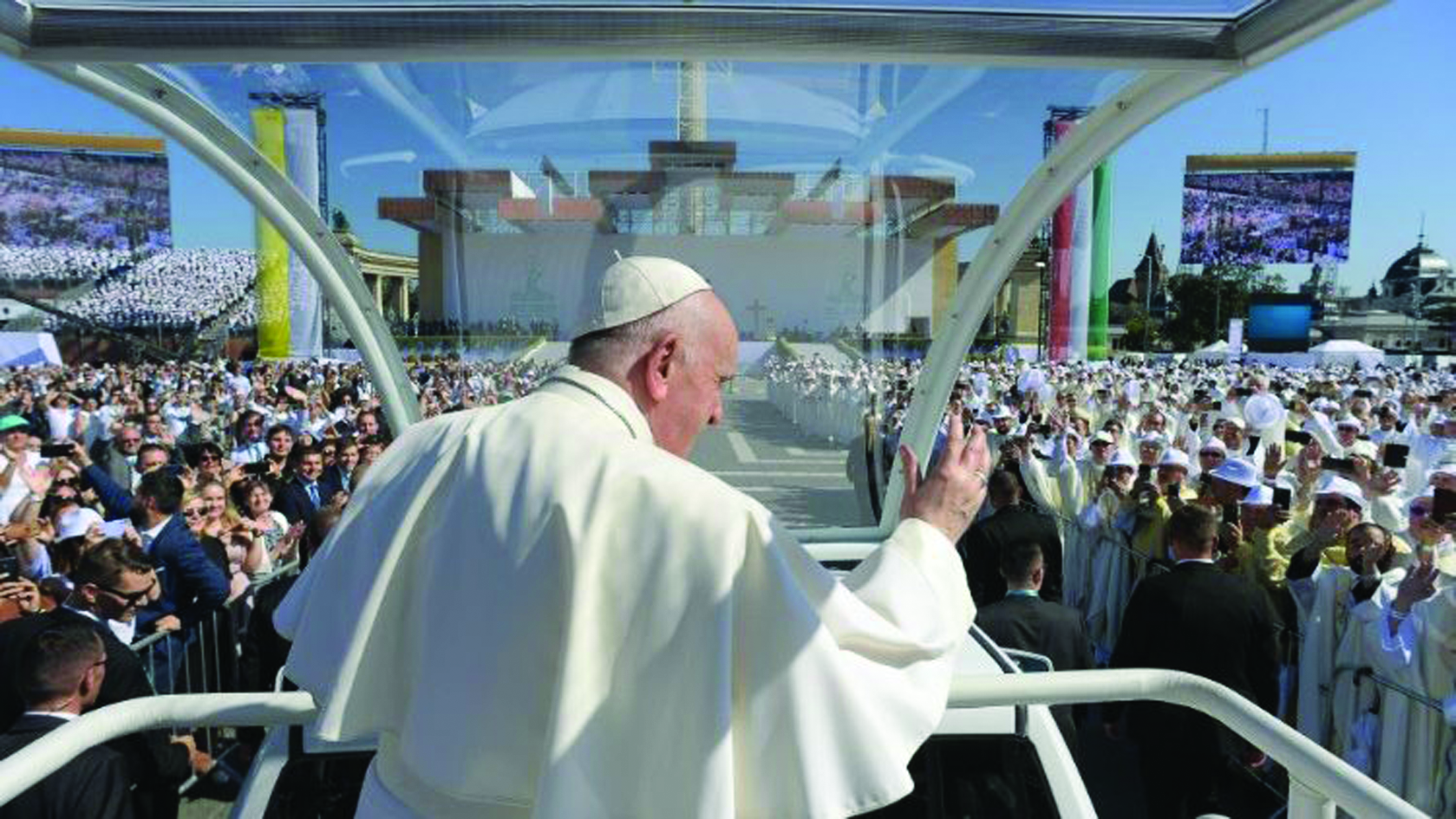The first Holy Week of Pope Francis revealed his style even more: in celebration, in preaching, in presence.
The decision to celebrate the Mass in coena Domini of Holy Thursday among the inmates of the juvenile detention facility of Casal del Marmo, washing the feet of twelve of them, including those of a Muslim young woman, is likely to serve as a lesson. It has fallen, moreover, on terrain already fertile, because gestures of this kind are not rare. On Good Friday, in Lyon, France, Cardinal Philippe Barbarin went to pray among a group of Romani expelled from a camp dismantled by the authorities. In São Paulo, Brazil, Cardinal Odilo Pedro Scherer took the passion of Jesus in procession through the notorious neighborhood of Carcolandia.
What rather remains without answer is the question about two apparently contrasting attitudes assumed by Pope Jorge Mario Bergoglio at the debut of his pontificate.
At Casal del Marmo, he was not afraid to offer the celebration of the Mass, culmen et fons of the life of the Church, to non-Christian young people as well.
However, at his March 16 audience with journalists, he declined to speak the words and make the gesture of blessing, “since many of you,” he said, “do not belong to the Catholic Church; others are not believers.”
In preaching, Pope Francis has confirmed his concentration on a few essential words, in a form that is certainly effective from the point of view of communication.
In the homily for Palm Sunday, the key passage was the description of the entrance of Jesus into Jerusalem as that of a king whose “royal throne is the wood of the cross.”
In the very brief homily for Holy Thursday at Casal del Marmo, he dwelt upon the significance of the washing of the feet.
In the homily for the Easter Vigil, the culminating passage was the following:
“Let the risen Jesus enter your life. Welcome him as a friend, with trust: he is life! If up till now you have kept him at a distance, step forward. He will receive you with open arms. If you have been indifferent, take a risk: you won’t be disappointed. If following him seems difficult, don’t be afraid; trust him, be confident that he is close to you, he is with you and he will give you the peace you are looking for and the strength to live as he would have you do.”
In any case, the richest and most profound and evocative homily among those given by Pope Francis during Holy Week was that of the Chrism Mass of Thursday morning.
The “people” liturgically loaded onto the shoulders of the priest who celebrates, the “peripheries” of the cities and the hearts touched by the messianic oil, the pastors who must take on “the odor of the sheep,” are images that remain successfully imprinted.
L’Osservatore Romano of March 30 revealed that the text of this homily for the Chrism Mass, “with the exception of some additions,” was the same one that Bergoglio had “prepared before he was elected Pope and had delivered to his collaborators before leaving for the conclave,” so much so that it was also read at the Chrism Mass celebrated in the cathedral of Buenos Aires.
As for the ars celebrandi, in the liturgies of Holy Week at St. Peter’s there was noted a greater respect for the symbolism and the splendor of the rituals than that seen in the Mass for the beginning of the pontificate.
Here as well, however, there were abbreviations that were not always understandable. In particular, it was not clear why at the Easter Vigil, after the singing of the Exsultet, the biblical readings were cut to the bone and the first was literally mutilated, witph the account of the six days of creation limited to the creation of man alone.
That brevity which in some contexts can find justification and is in effect provided for by the Missal made no obvious sense in an Easter Vigil presided over by the Pope and attended — in person or via transmission — by a highly motivated faithful people, who were deprived of the fullness of that narration of the “historia salutis” which the liturgy illuminates, on this culminating night of the year, with the lighting of the Easter candle.
In one of his memorable passages, Romano Guardini described the celebration of the Easter liturgy in the basilica of Monreale, Sicily, packed with poor and mostly illiterate farmers, who nonetheless were enchanted by the splendor of the rite: “The sacred ceremony lasted for more than four hours, and yet there was always a lively participation.”
It was precisely on Guardini that the Jesuit Bergoglio was planning to write his thesis for his doctorate in theology, during an academic sojourn in Germany in 1986 at the philosophical-theological faculty of Sankt Georgen in Frankfurt, a plan that was later abandoned.
English translation by Matthew Sherry, Ballwin, Missouri, U.S.A.
Click here to read Pope Francis’ Urbi et Orbi blessing given to the faithful gathered in St. Peter’s Square on Easter Sunday.






Facebook Comments